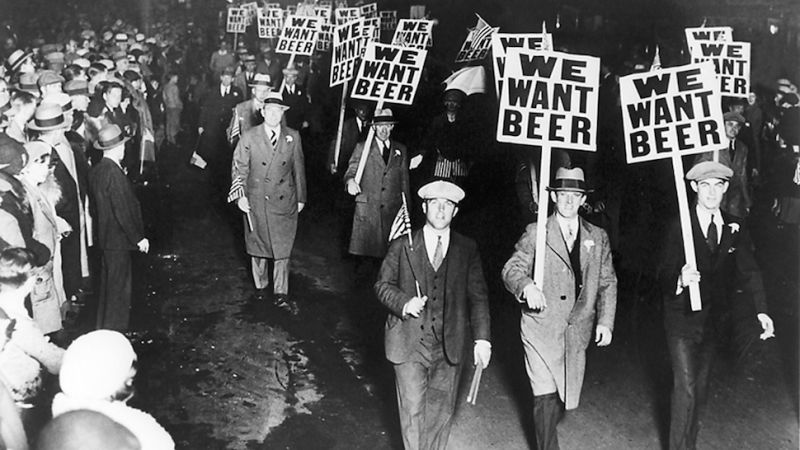The Insanity That Was Prohibition

Can you imagine the unbridled uprising that would occur if the government outlawed alcohol today? As we’re eerily a century ahead of the Spanish Flu, which sent the country behind face masks in 1918, let’s revisit what followed right after: Prohibition. The Volstead Act triggered a lawless 13-year period that bankrolled organized crime, gave birth to our most infamous mobsters, poured lighter fluid on the Great Depression, and made the 1920’s a hotbed of domestic anarchy.
While this era has been romanticized by F. Scott Fitzgerald, memorialized by glamorous bars that monetize these fabled clandestine speakeasies, Prohibition was one of the biggest boondoggles in American History. New York developed a dark underbelly, highlighted by an economic downtown, rampant murder, nefarious clubs, deadly unregulated alcohol. Estimates of the number of speakeasies in New York are upwards of 100,000, with the majority being anything from glamorous. This figure gave New York it’s infamous name, the “City on a Still.”
In principle, the argument for prohibition seemed noble; it would improve health and safety, promote economic prosperity, and increase public morality. Alcohol was presumed to be crippling the population after the costly Great War. However this did more harm that good, as the country had no sales tax at that point and a whopping 75% of NYS revenue was previously derived from liquor taxes.
Mob-controlled liquor replaced legitimate tax-paying alcohol producers and retailers. Gangster-owned speakeasies replaced neighborhood drinking establishments. The number of registered pharmacists in New York tripled during Prohibition, as they could legally prescribe whiskey for any number of ailments, ranging from anxiety to influenza. Violators of the prohibition laws could be formally prosecuted, which led to the arrest of over 7,000 people in NYC between 1921 and 1923. Bootlegging from Canada became a dangerous alternative and was rampant off the coast of NYC and across the Lawrence River upstate.
The nation was falling deeper into a financial depression, spending money it didn’t have combing for bathtub breweries, and the only market turning a profit – illegal alcohol – wasn’t paying any taxes. Before Prohibition, nearly 15% of the nation’s income came from alcohol taxes. With that, on February 20th, 1933, Congress proposed the Twenty First amendment, which would repeal the 18th. Within a year, the amendment was overwhelmingly ratified.
To this day, remnants of New York’s Speakeasies have been preserved and are still in operation; the Player’s Club, the 21 Club the Cotton Club, the Stork Club, the Back Room, the William Barnacle Tavern, and the KGB Red Room have kept much of their original magic, banking on the surreptitious vibes.
Want to go down the google rabbit hole?
For how absolutely wild things got in New York City, click here: Pete’s Tavern in Union Square disguised itself as a florist up front, while “customers entered through a back room and a dummy refrigerator door.” And Chumley’s, on Bedford Street, had “several entrances and exits including an underground tunnel a block away, as well as a secret door behind a bookcase leading to a side alley.”
For a walk through some of the city’s top speakeasies that are still around, click here and for a deeper dive into other ways to sneak alcohol, click here.
If you’re a visual person, click away for pictures from inside speakeasies, of Prohibition itself, of New York City in the 1920s.